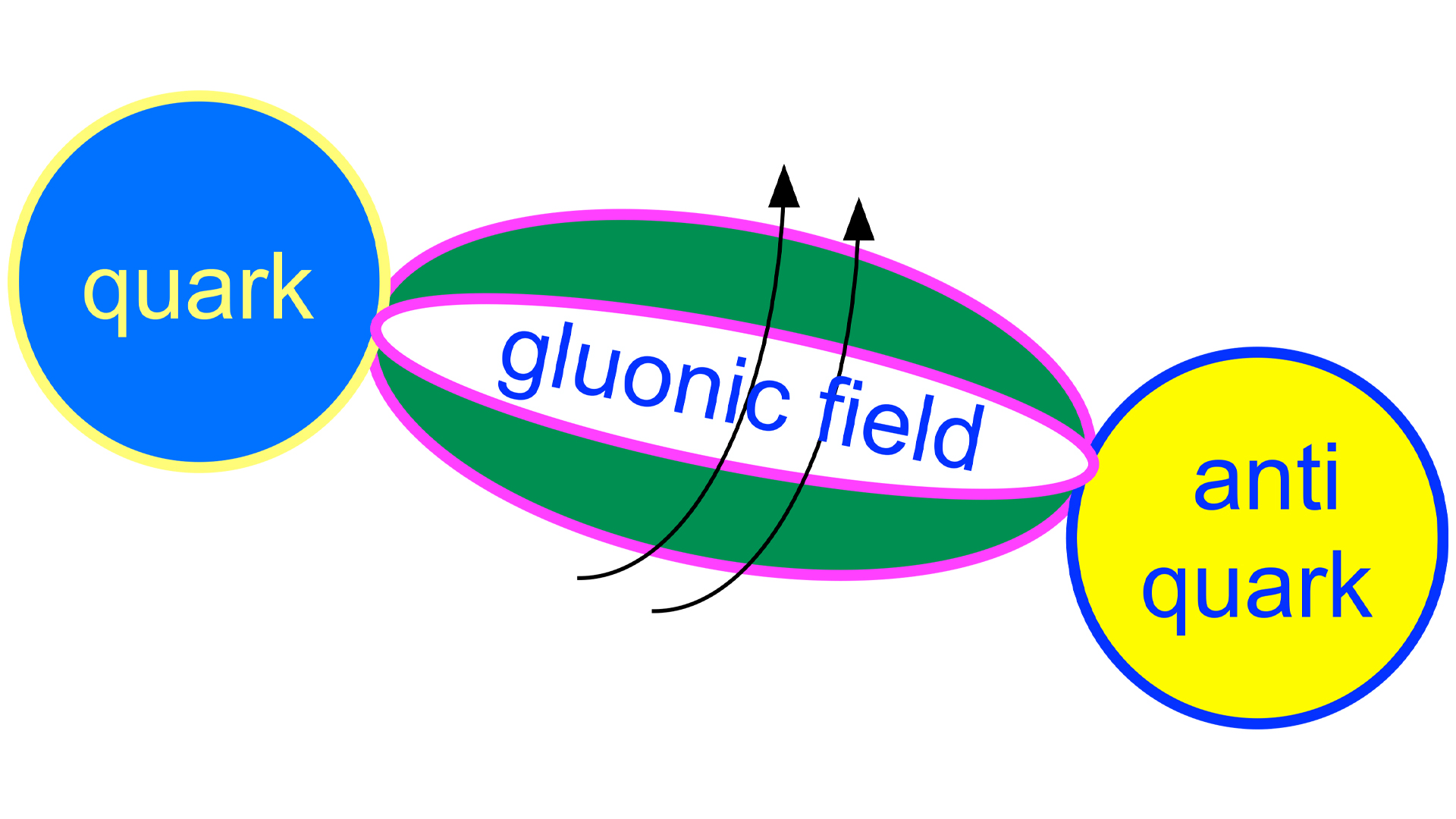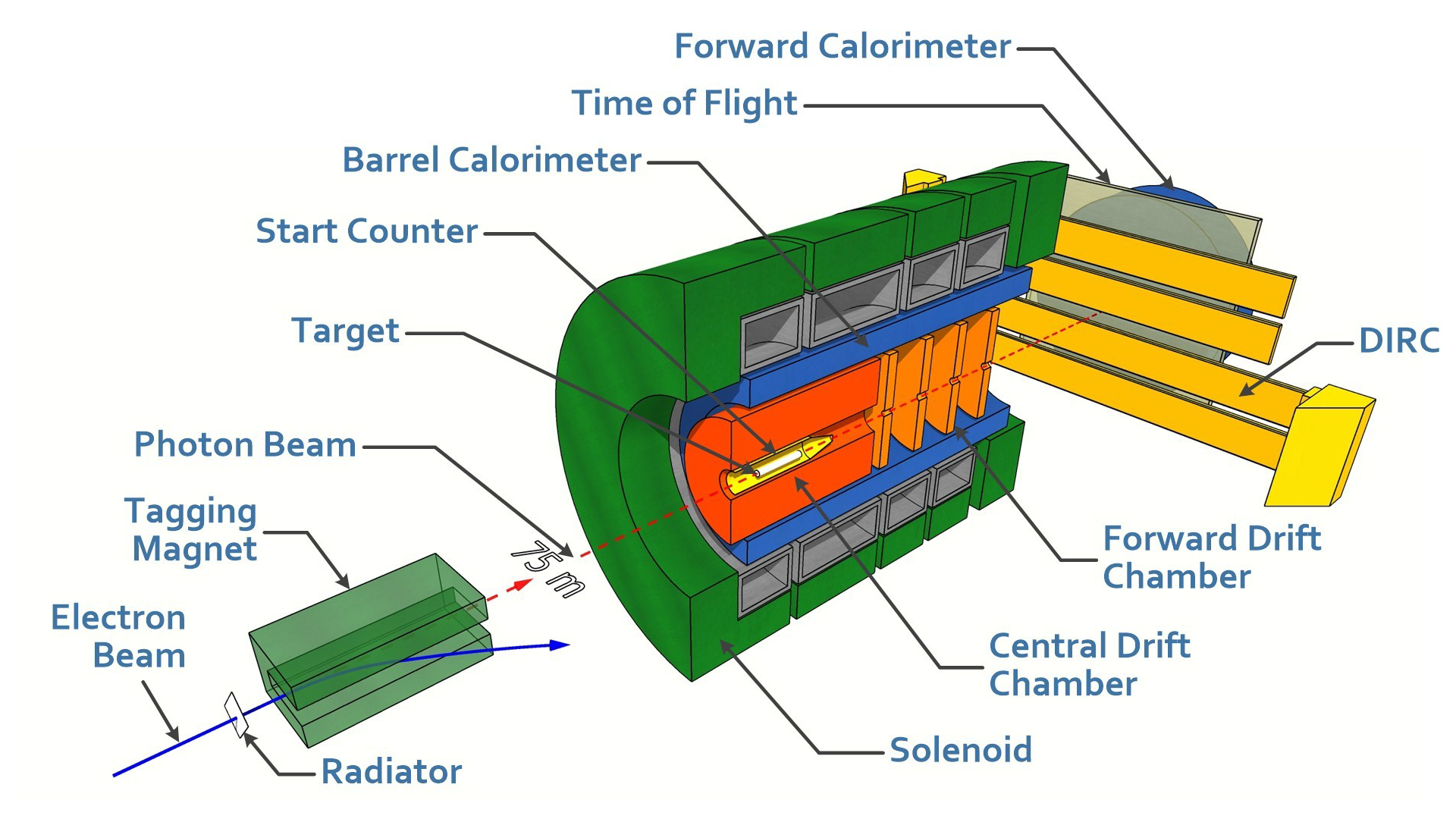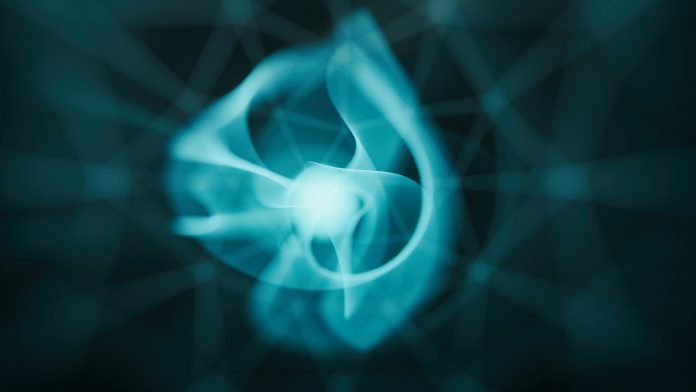Professor Curtis A Meyer, from Carnegie Mellon University’s Department of Physics, provides fascinating insights into the cutting-edge research conducted at the GlueX Experiment.
Over the last fifteen years, our understanding of the structure of building blocks of matter in our universe, protons and neutrons, has made significant strides forward. We now understand that properties of these building blocks are not just dependent on the three quarks we typically associate with them, but also the strong force, described by quantum chromodynamics (QCD) and by the gluons of QCD. In particular, these gluons account for much of a proton and neutron’s mass, as well as part of their spins. The GlueX Experiment [1] has been built to comprehend the role these gluons play in quark matter.
Gluonic excitations
As measurements of the hydrogen atom and its spectrum led to the development of quantum mechanics over a century ago, the studies of the analogous QCD systems can help elucidate the role glue plays in matter. In particular, the excited spectrum of quark-antiquark pairs, known as mesons, can play this role. Theoretically, it is possible to solve QCD on supercomputers using a technique known as lattice QCD, and substantial work has been carried out to understand the spectrum of mesons [2–4]. These calculations both reproduce the experimentally known spectrum as well as predict a new type of meson where the gluonic field plays a significant role in the mesons’ properties (hybrid mesons). These states can be viewed as ones where the gluonic field binds the quark, and the antiquark rotates itself (Fig. 1). In addition, some of these hybrids are predicted to have properties not allowed for in normal quark-antiquark states; the exotic hybrid mesons. Lattice QCD calculations have now advanced to the point that the calculation of the decays of the lightest exotic hybrid is now possible [5].

Experimentally, the search for gluonic excitations of mesons goes back several decades with extensive efforts to identify both states made entirely of gluons (glueballs) [6] as well as searches for exotic hybrids [7, 8]. While lattice QCD predicts the existence of at least fifteen exotic hybrids, only one such state, consistent with an exotic hybrid, has been experimentally identified.
In order for a new experiment to be able to contribute to our understanding of gluonic excitations, it would need to approach things from a new direction. Very high statistics data sets have already been collected from many reactions, and as noted above, provide evidence for only a single state. A new approach became feasible with the start of the physics program at the Thomas Jefferson National Accelerator Facility (JLab) in the late 90s. Through using the JLab electron beam, it was possible to make beams of high energy photons that could be used to study the photoproduction of mesons. It was also realised that if the energy of the JLab accelerator were doubled, the photon energy would be near a sweet spot for searching for exotic hybrid mesons. This energy was optimal not only in that it was sufficient to produce particles of mass expected for the hybrid mesons, but also that historically almost no data existed. It would be possible to increase the existing data sets of a few thousand events by three or more orders of magnitude. Essentially, opening an unexplored regime in the search for exotic hybrids. The GlueX [1] experiment was designed to carry out the studies at the energy-doubled JLab accelerator.
The GlueX Experiment
The analysis techniques needed to identify hybrid mesons require high statistics, the ability to identify all the produced particles in a reaction, and a detector with almost no gaps in its acceptance. In addition, linearly polarised photon beams allow us to control the different types of production mechanisms and thereby increase the sensitivity of our searches. The GlueX experiment is shown schematically in Fig. 2. The key feature of this is that linearly polarised photons are produced from the electron beam, and those photons then interact in a liquid hydrogen target. The interactions proceed through a large number of possible reactions, ultimately producing long-lived charged particles and photons. The GlueX detector then determines the momentum and energy of those particles, allowing for a complete reconstruction of individual interactions.

In order to reach the high statistics necessary to search for exotic hybrids, GlueX has steadily ramped up the rate at which it can collect data from 30,000 interactions per second in 2017 to about 100,000 interactions per second in 2020. At these rates, GlueX records over a gigabyte of data every second, and the experiment has collected around 10 petabytes of data, putting it in a similar situation to LHC experiments at CERN. This data represents less than a third of the approved programme, which is expected to be completed in the latter half of the decade.
The search for exotics
In GlueX, it is possible, but by no means guaranteed, that all of the predicted exotic hybrids could be produced in photoproduction. Thus, the hybrid searches in GlueX focus initially on final states that are relatively easy to reconstruct. In parallel, a programme using the same search techniques demonstrate that the experiment can correctly reconstruct known particles. The search for exotic hybrid mesons in GlueX is based on a strategy of targeting progressively more difficult analyses. Our initial work started with studies that could be done with only a small fraction of GlueX data. The studies to date have focussed on understanding how particles are produced in photoproduction (taking advantage of the linearly polarised photons), as well as opportunistic physics. Our first search for the single known hybrid candidate is well underway and involves an extensive coordinated effort to look at the reactions from several perspectives. This work is approaching publication. Beyond this first search, there are a number of interesting reactions that will all follow the same analysis strategy. The machinery for that has been developed using a well-known final state and is nearly ready to be deployed in the search for exotics.
Summary
With about one-third of the approved GlueX data now collected, the search for gluonic excitations of mesons, so-called exotic hybrids, has started in earnest. Our search for the single known candidate is well advanced, and the next round of investigations for a broader range of particles is now ramping up. While it is too early to know what we will learn, we believe that we will make extremely valuable contributions over the next few years and accomplish even more when the complete GlueX data set is available.
References
- S. Adhikari et al. [The GlueX Collaboration], The GlueX Beamline and Detector, Nucl. Instrum. Methods. A987 164807 (2021). https://doi.org/10.1016/j.nima.2020.164807
- J.J. Dudek, R. G. Edwards, M. J. Peardon, D. G. Richards and C. E. Thomas, Highly excited and exotic meson spectrum from dynamical lattice QCD, Phys. Rev. Lett. 103, 262001 (2009). https://doi.org/10.1103/PhysRevLett.103.262001
- J.J. Dudek, R. G. Edwards, M. J. Peardon, D. G. Richards and C. E. Thomas, Toward the excited meson spectrum of dynamical QCD, Phys. Rev. D 82, 034508 (2010). https://doi.org/10.1103/PhysRevD.82.034508
- J.J. Dudek, R. G. Edwards, B. Joo, M. J. Peardon, D. G. Richards and C. E. Thomas, Isoscalar meson spectroscopy from lattice QCD, Phys. Rev. D 83, 111502 (2011). https://doi.org/10.1103/PhysRevD.83.111502
- J.W. Antoni, J. J. Dudek, R. G. Edwards, C. E. Thomas, and D. J. WILSON, Decays of an exotic 1−+ hybrid meson resonance in QCD, Phys. Rev. D 103, 054502 (2021). DOI: 10.1103/PhysRevD.103.054502
- V. Crede and C. A. Meyer, The Experimental Status of Glueballs Prog. Part. Nucl. Phys. 63, 74 (2009). DOI: 10.1016/j.ppnp.2009.03.001
- C.A. Meyer and Y. van Haarlem, The Status of Exotic-quantum-number Mesons Phys. Rev. C82, 025208 (2010). DOI: 10.1103/PhysRevC.82.025208
- C.A. Meyer and E. S. Swanson, Hybrid Mesons, Progress in Particle and Nuclear Physics B82, 21, (2015). DOI: 10.1016/j.ppnp.2015.03.001








